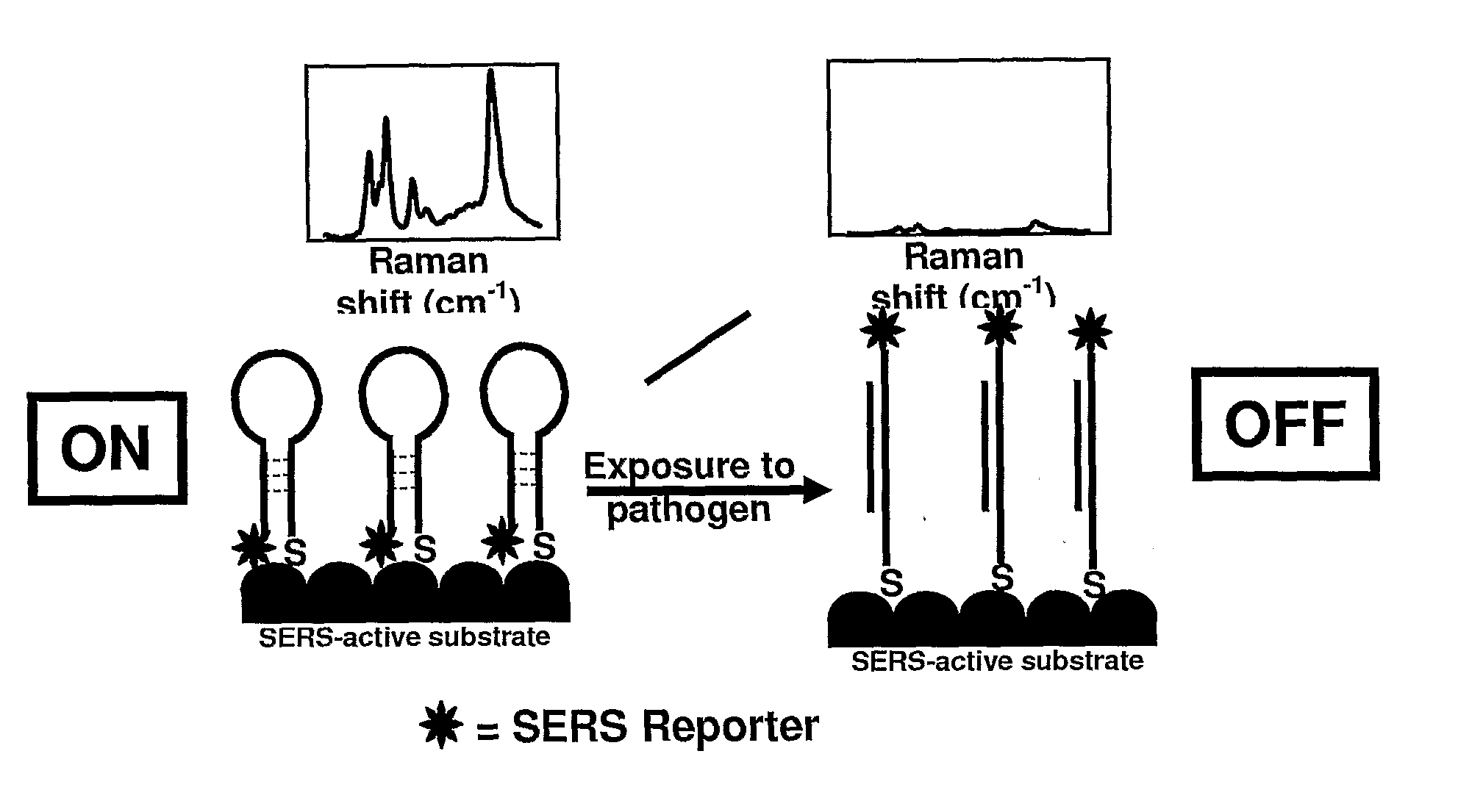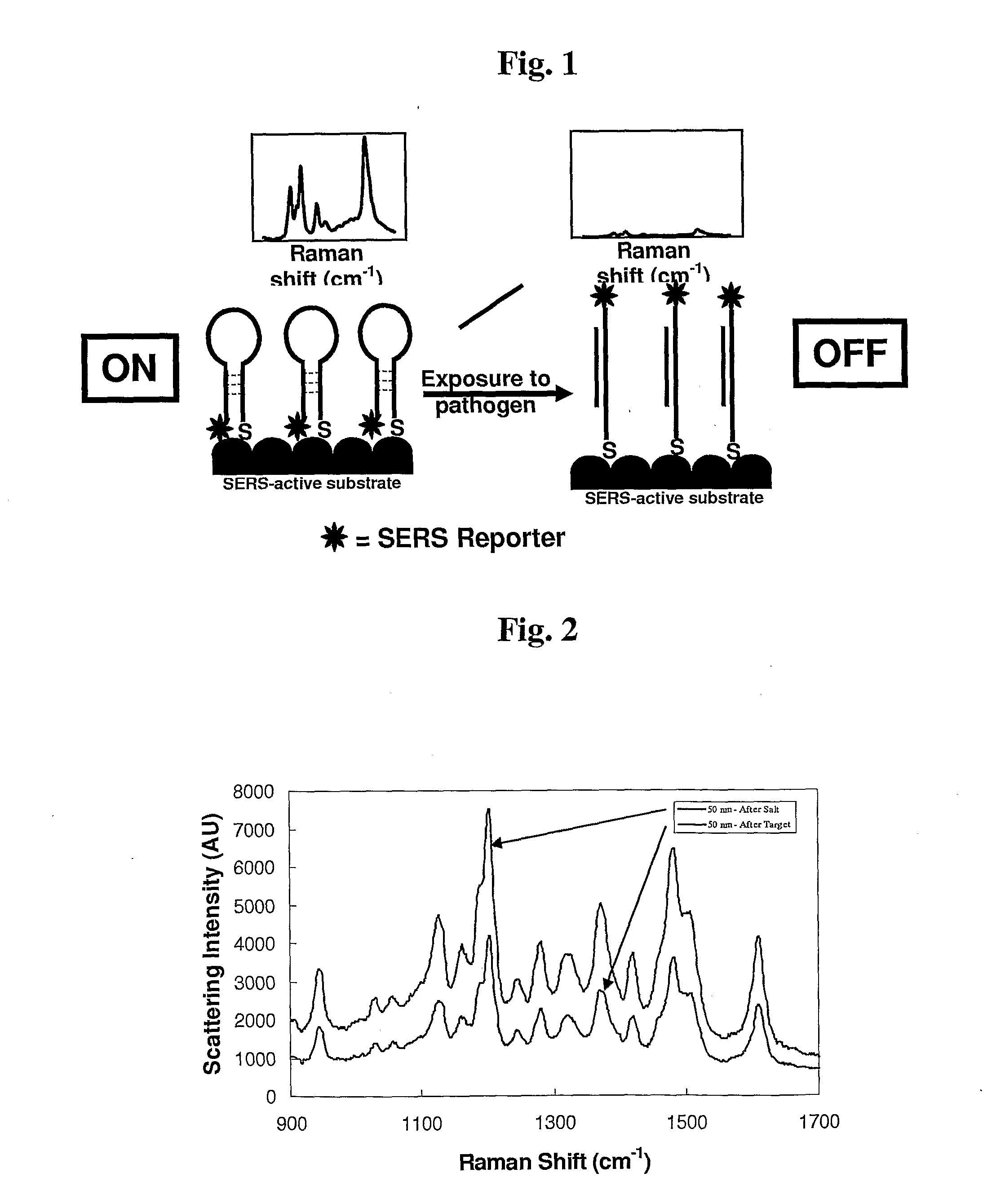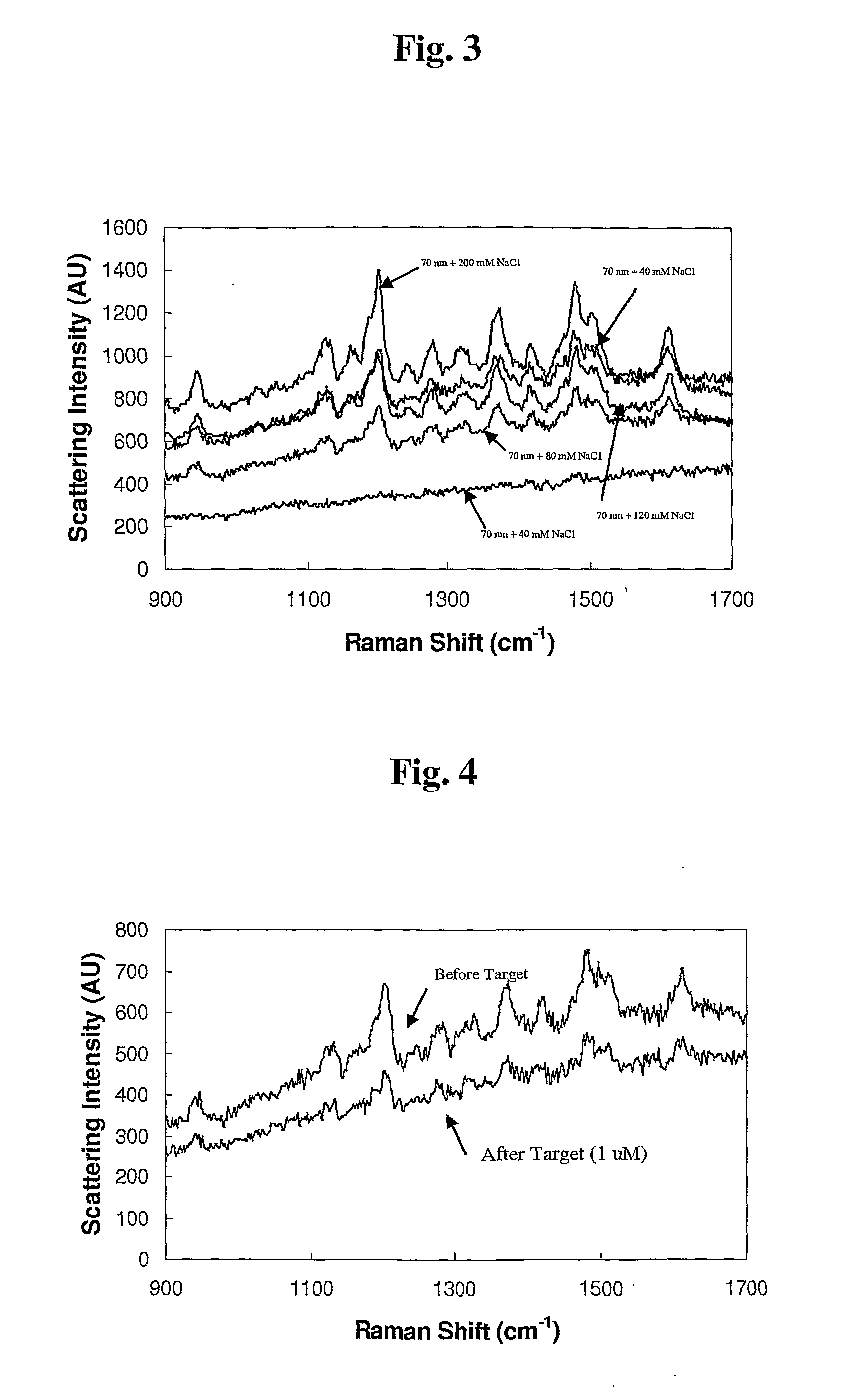Sers-based methods for detection of bioagents
a bioagent and detection method technology, applied in the field of bioagent detection system, can solve the problems of inability to detect bioagents in complex biochemical backgrounds, high cost, and high sample preparation requirements, and achieve the effect of avoiding fluorescence signals and avoiding toxicity
- Summary
- Abstract
- Description
- Claims
- Application Information
AI Technical Summary
Benefits of technology
Problems solved by technology
Method used
Image
Examples
example 1
SERS Beacon Probe Design
[0061]The stem-loop structures of the molecular beacons were designed using the software program MFold. The HCV probe sequence was designed from 5′ UTR region. The sequence was: 5′ thiol (CH2)6 gcgag CAT AGT GGT CTG COG AAC CGG TGA ctcgc (CH2)7 Cy5-3′ (SEQ ID NO: 1). The HCV target sequence was: TCA CCG GTT CCG CAG ACC ACT ATG (SEQ ID NO: 2). All probes and targets were purchased from BioSource. The HCV viral RNA was ordered from Ambion Diagnostics.
example 2
SERS Molecular Beacons Using Gold Colloid Substrates
[0062]A 100 μL aliquot of the Cy5 molecular beacon (Cy5-MB) was prepared in ultrapure water. Next, 250 μL of 50 or 70 nm colloidal gold (0.01% Au by weight) was added to the beacon solution. These were incubated for approximately 6 hours before addition of 5 μL of 2.0 M NaCl. After 30 minutes, another 5 μL of NaCl was added. Another 30 minutes was allowed before excess beacon was purified by centrifugation (˜1500 RCF for 12 minutes, repeated 3 times). Particles were resuspended in TE buffer (10 mM TRIS, 0.1 mM EDTA, pH 7.5).
[0063]HCV probe assembled colloids were placed into sample wells on a quartz slide. Each well in the gasket was approximately 2 mm in diameter and depth, and held up to 10 μL of solution. Aliquots (5 μL) of each conjugate were placed into separate wells and their Raman spectra interrogated. No SERS peaks were visible using the maximum laser power setting with a 1 second integration time and a 5× objective. It wa...
example 3
SERS Beacon Assay for Detection of Oligonucleotide Targets, Using Nanowire Substrates
[0065]A. Preparation of Nanowires. Gold and silver nanowires (Nanobarcodes® Particles) have been used previously to quench fluorescence based molecular beacons (WO 2005 / 020890). The advantage of using these substrates it is possible to determine both the SERS response and the fluorescence response, thereby providing an ability to confirm the results using an orthogonal method. FIG. 5 shows a cartoon depiction of this assay format. Nanowires (Nanobarcodes® Particles) were manufactured as previous described (Nicewarner-Pena, S. R., et al., (2001) Science 294, 137-141; Reiss, et al. (2002) J. Electranal. Chem. 522, 95-103; Walton, et al. (2002) Anal. Chem. 74, 2240-2247). Briefly, alternating layers of gold and silver are electroplated into the pores of an alumina template, the template is dissolved using strong base, resulting in the formation of striped nanowires. The nanowires used in this study wer...
PUM
| Property | Measurement | Unit |
|---|---|---|
| size | aaaaa | aaaaa |
| temperature | aaaaa | aaaaa |
| pH | aaaaa | aaaaa |
Abstract
Description
Claims
Application Information
 Login to View More
Login to View More - R&D
- Intellectual Property
- Life Sciences
- Materials
- Tech Scout
- Unparalleled Data Quality
- Higher Quality Content
- 60% Fewer Hallucinations
Browse by: Latest US Patents, China's latest patents, Technical Efficacy Thesaurus, Application Domain, Technology Topic, Popular Technical Reports.
© 2025 PatSnap. All rights reserved.Legal|Privacy policy|Modern Slavery Act Transparency Statement|Sitemap|About US| Contact US: help@patsnap.com



